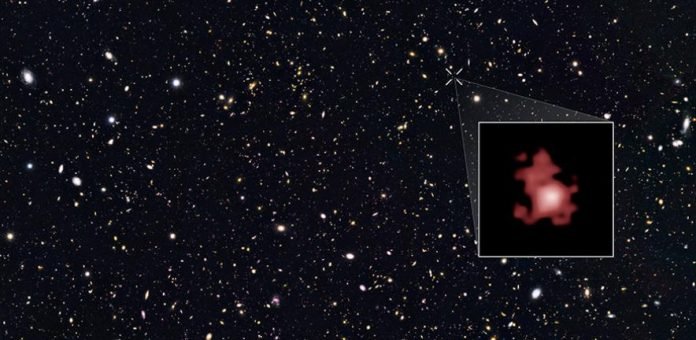
In a stunning discovery, astronomers have found the oldest black hole ever seen.
This massive space giant, dating back to the very early days of the universe, is not just sitting idly; it’s actively consuming its host galaxy.
This breakthrough, made using the powerful James Webb Space Telescope (JWST), is turning heads in the science world. Researchers from the University of Cambridge, leading an international team, used JWST to spot this ancient black hole.
It’s a relic from a time only 400 million years after the universe began – more than 13 billion years ago. This discovery is big news and has been reported in the respected journal Nature.
Professor Roberto Maiolino, the study’s lead author, is thrilled.
He compares the jump in technology provided by the JWST to moving from Galileo’s old telescope to a state-of-the-art modern one. This new black hole is a few million times heavier than our Sun, which is surprising considering its age.
Typically, astronomers think supermassive black holes, like the one in the center of our Milky Way, grew slowly over billions of years.
But this newly found black hole challenges that idea. It’s so big, it might have been ‘born big,’ or it could be eating up matter faster than anyone thought was possible.
Usually, supermassive black holes are thought to start from the remains of dead stars. These remains collapse and could form a black hole about a hundred times the size of the Sun.
If a black hole grew in the usual way, this ancient black hole would have taken about a billion years to reach its current size. But the universe itself wasn’t even a billion years old when this black hole formed.
Maiolino, from the University of Cambridge, suggests that early galaxies were full of gas, which would have been like an all-you-can-eat buffet for hungry black holes.
Black holes eat material from their host galaxies to grow. This ancient black hole is doing just that, but at a much faster pace than its younger counterparts.
The host galaxy, named GN-z11, is small compared to the Milky Way but is suffering because of its central black hole. As black holes devour too much gas, they push it away, creating a powerful ‘wind.’ This wind can stop new stars from forming, essentially starving the galaxy. But it also starves the black hole itself, cutting off its food supply.
Maiolino is excited about this era in astronomy, thanks to the JWST. He believes that the universe is full of surprises and that this discovery is just the start. The JWST’s sensitivity, especially in the infrared range, could lead to finding even older black holes.
The team, supported by various scientific organizations, is now looking to find smaller black holes. These ‘seeds’ could help them understand how black holes are formed: whether they start big or grow quickly.
This discovery is not just about finding the oldest black hole; it’s about uncovering the mysteries of our universe’s early days.



